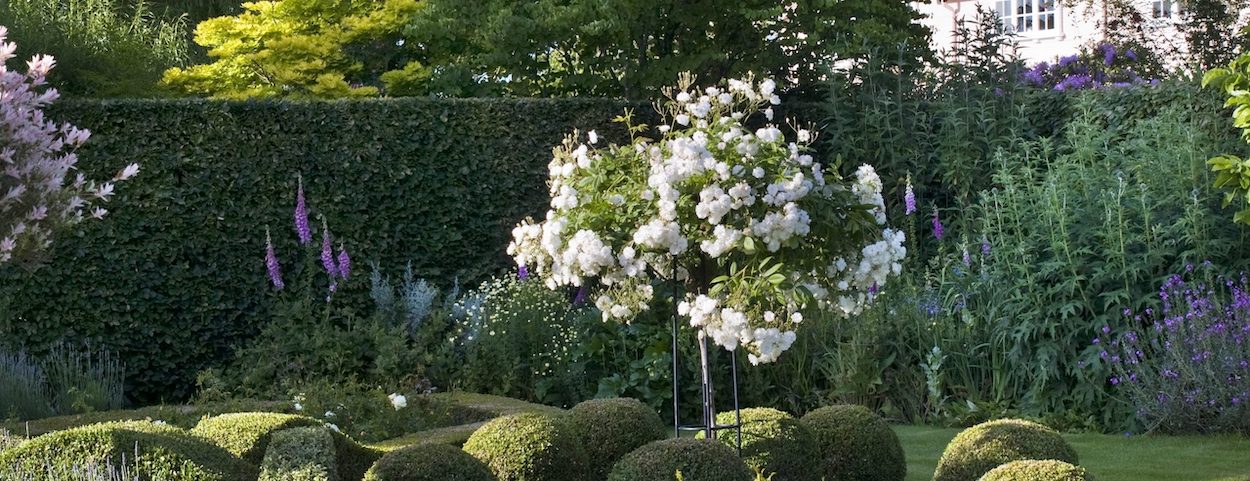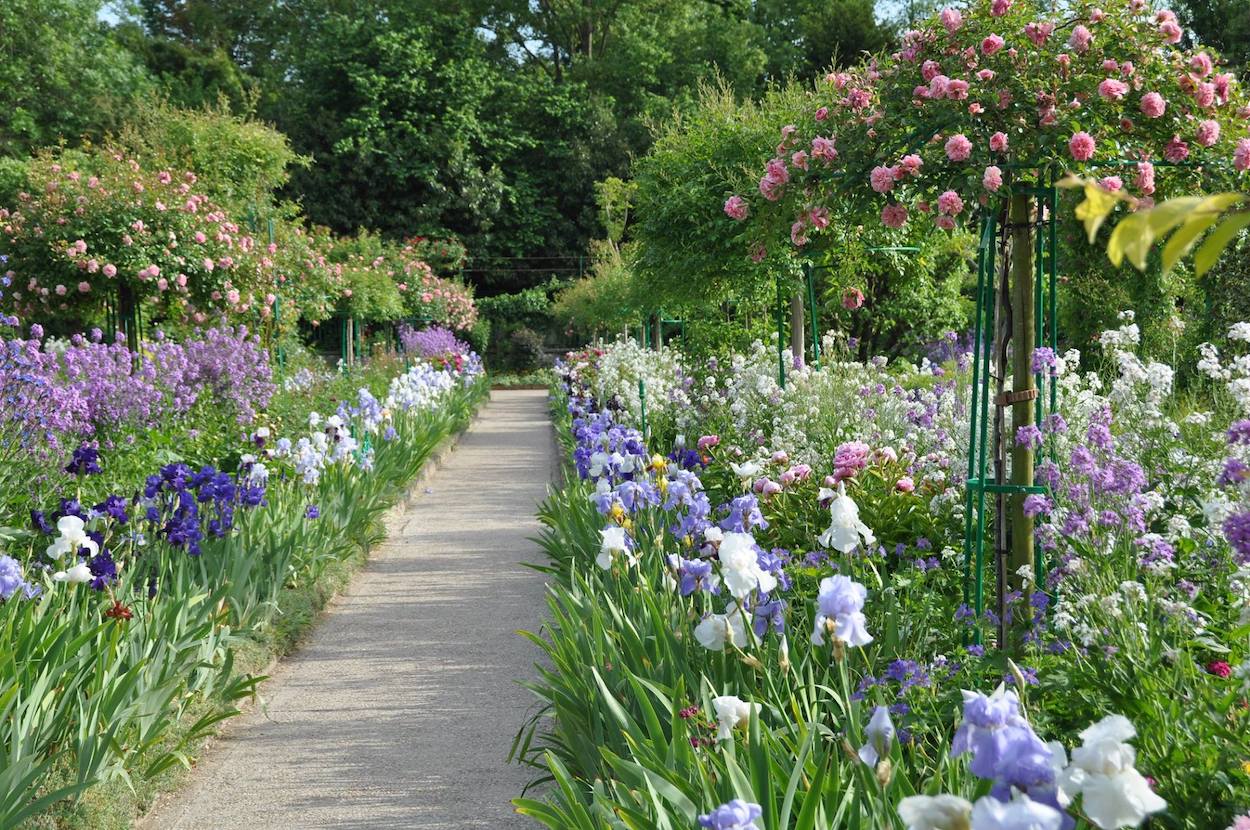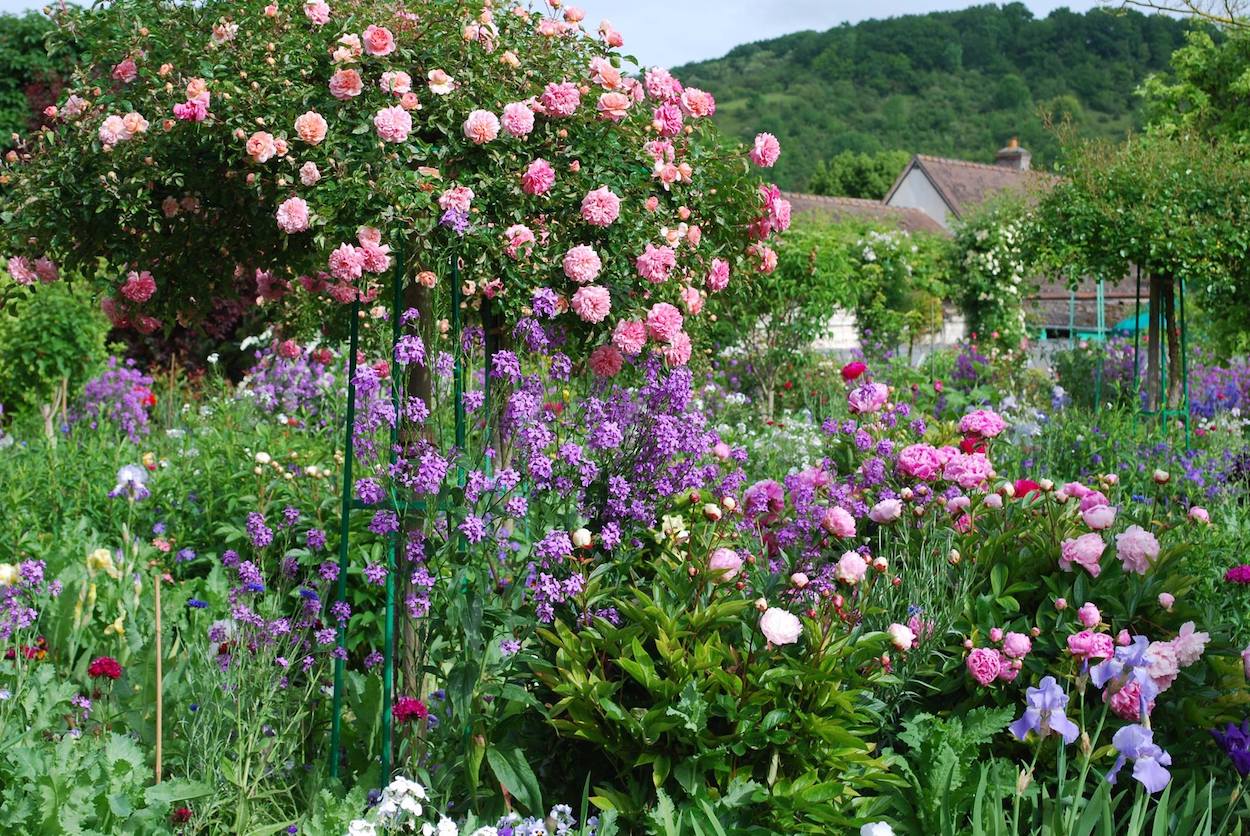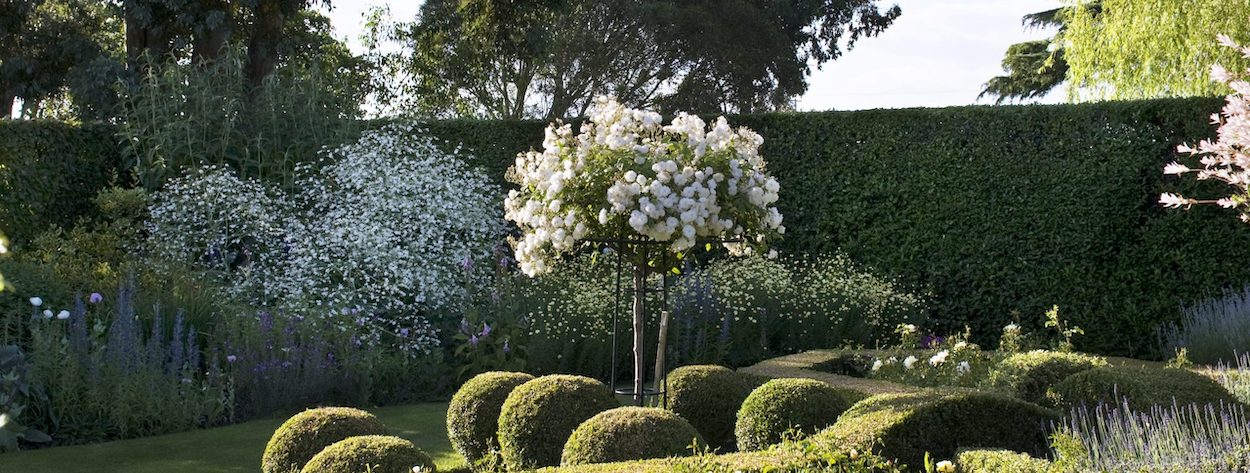
Tips on Weeping Standard Roses
Rose blossom at eye height
Tips on Weeping Standard Roses
Weeping standard roses are special 140 cm high rose trees producing large and attractive crowns of blooms with long and supple branches. Here are some recommended varieties as well as a few tips on how to care for them.
Rose Trees, Standard Roses and Weeping Standard Roses
When you browse the various types of standard roses on offer at most nurseries, you usually come across plants of three different heights. The flowering height of the smallest variety, which is known as a half standard rose, is usually around 40 to 60 cm. Next in the line-up are the standard roses, whose glorious floral crowns stand at around 70 to 90 cm from the ground. The third and final variety is the weeping standard rose, which dwarfs its smaller siblings with its flowering height of around 140 cm. Over the years, all three varieties will grow into impressive ‘rose trees’. At the height of summer, when hundreds of roses all come into bloom at the same time, they are a truly eye-catching sight.
Designing Borders with Weeping Standard Roses
With spring and summer flowering perennials planted below and around them, these durable rose trees play their part in creating an attractive border that will continue to bring joy year after year. With roses flowering at eye height.
Weeping standards need solid plant supports
Most weeping standard roses create floral crowns of around 1 to 1.5 m in diameter. When the stems of the floral crown start growing, they begin to bend over, leading to long trailing stems and flowers that appear to cascade downwards. For varieties with pliable stems, such as the ‘Guirlande d’Amour’ or the ‘Super Dorothy’, choosing a very solid plant support for the rose is crucial. The frame is placed into the ground at the same time as the standard rose is planted. Such a framework not only supports the heavy crown of flowers but also helps to guide the shoots downwards and into the desired shape. Without such a trellis, strong winds can easily damage a weeping standard rose in full bloom.
Available Plant Supports for Weeping Standard Roses
If you have the skills, you can build a plant support yourself. However, you can also buy attractive, well-designed and very solid models of various types, such as Classic Garden Elements’ ‘Giverny Rose Umbrella Support’. This rose umbrella even comes in a model (featuring a lateral opening) that can be planted at a later date in order to give support to older stems.
Impressionist painter Claude Monet and the ‘Giverny Rose Umbrella’
In the gardens at Giverny, rose umbrella-like solid metal frames overflow with cascading rose blooms. Designed by the impressionist painter Claude Monet himself, these simple iron structures transform weeping standard roses into beguiling impressionist paintings.
The story of why and how Monet planned and planted the garden as he did is as intriguing as its result. Monet’s passion for gardening almost equaled his devotion to art, but it was only when he arrived in Giverny in 1883 that he had both the financial means and sufficient land to indulge his enthusiasm.
As avant-garde a gardener as he was an artist, Monet designed his garden with the vignettes of flowers, trees and water that he wanted to paint. And Monet also designed that purely practical umbrella like metal structure, named ‚Giverny Rose Umbrella‘, for one single reason: to make his roses blossom at eye height.
Plant by March at the latest
The best time to plant a weeping standard is during the winter months – optimally, they would be in the ground by March at the latest. They’re best planted as bare-root plants. Potted roses can be planted from April onwards. However, there is a whole host of reasons to choose bare-root plants over potted ones: to name but a few, bare-root plants are cheaper to buy, easier to send and more comfortable to plant. Since roses prefer chalky, clayey soil, it is almost always advisable to add around 20 l of compost and bentonite powder to the 60-cm-deep planting hole. If you prefer, you could also use rose soil.
Once- and repeat-flowering recommended varieties for weeping standard roses
When choosing a weeping standard, you need to decide if you want to go for a once-flowering variety, such as ‘Raubritter’, or a repeat-flowering rose, like ‘Apfelblüte’. Other good varieties are listed at the end of this article. When it comes to picking a weeping standard rose, it’s important to consider how healthy and frost hardy the variety is. Unfortunately, you do still see disease-prone varieties, such as ‘Schneewittchen’, on the market. Other suboptimal varieties include ‘Westerland’, which – with stems that grow loosely upwards – does not make the best weeping standard. Roses with pliable stems grow into the most attractive weeping standard roses. Most of these varieties produce small blooms – an exception is the ‘Laguna’ rose, which has pink flowers of around 8 cm in diameter. Weeping standards also come in fragrant varieties, such as ‘Jasmina’, whose 5- to 6-cm-large flowers have a wonderfully strong and fruity scent.
A tall stem means abundant blossom
Recommendations for weeping standard varieties
| Variety | Characteristics | Grower and breeding year |
| ‘Apfelblüte’ | White, single blooms, repeat flowering | Noack, 1990 |
| ‘Ghislaine de Feligonde’ | Apricot pink, double blooms, repeat flowering | Turbat, 1916 |
| ‘Guirlande d’Amour’ | White, semi-double blooms, scented, repeat flowering | Luis Lens, 1993 |
| ‘Hella’ | White, semi-double blooms, repeat flowering | Kordes, 2009 |
| ‘Hermann Schmidt’ | Crimson, semi-double blooms, scented, repeat flowering | Hetzel, 1986 |
| ‘Jasmina’ | Lilac, double blooms, strongly scented, repeat flowering | Kordes, 2005 |
| ‘Laguna’ | Pink, double blooms, repeat flowering | Kordes, 2004 |
| ‘Mozart’ | Pink, single blooms, repeat flowering | Lambert, 1937 |
| ‘Perennial Blue’ | Mauve/purple, semi-double blooms, repeat flowering | Mehring, 2003 |
| ‘Raubritter’ | Pink, spherical blooms, once flowering | Kordes, 1936 |
| ‘Super Excelsa’ | Crimson/pink, double blooms, repeat flowering | Hetzel, 1986 |
| ‘Super Dorothy’ | Pink, double blooms, repeat flowering | Hetzel, 1986 |
Tips on pruning
Weeping standards that are left unpruned are more likely to be damaged by strong winds, and they will also produce fewer blooms. A healthy and vibrant weeping standard is a well cared-for one.
Pruning repeat-flowering Weeping Standard Roses
If you have a repeat-flowering rose, the optimal time to prune it is in March and again in the summer, after the first flowering. Pruning should be carried out as follows.
- In the rose’s first two or three years, only light pruning is necessary. All you need do is remove any dead stems in the spring. You should also cut back any thin or withered stems to the point at which they are as thick as a pencil, optimally in March.
- From its fourth year onwards, the rose’s crown should be pruned too – you can cut it back to a third of its original volume. Old single stems can be removed down as far as the bud union, so that the frame of the crown is made up of strong, young stems. The thin side stems can be pruned down to two or three bud eyes in length.
- Once this pruning is complete, the remaining stems then need to be attached to the frame. This means that stems that have been growing every which way must now be nicely arranged and tied to the plant support so that they grow downwards.
- Attaching the stems to the structure horizontally will encourage an abundance of blossom. You can also attach young stems in such a way that they grow from right to left, if you need to fill any potential gaps in the shape of the crown.
- Plastic garden twine is a good choice for tying stems to the frame, as it doesn’t cut into the plant and, thanks to its elasticity, will hold for many years.
Pruning once-flowering Weeping Standard Roses
Once-flowering weeping standards should be pruned between July and early August, once they have flowered. The pruning approach is similar to that of repeat-flowering varieties except that stems shouldn’t be attached to the frame until the winter, once the rose has lost its leaves.
Download our guide to weeping standards here.
© Copyright Classic Garden Elements Vertriebs GmbH – Author: Klaus Krohme
All rights reserved.






